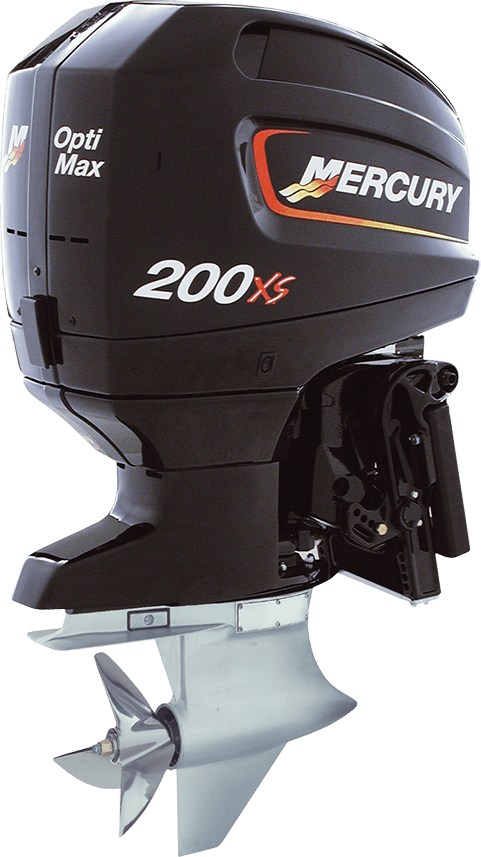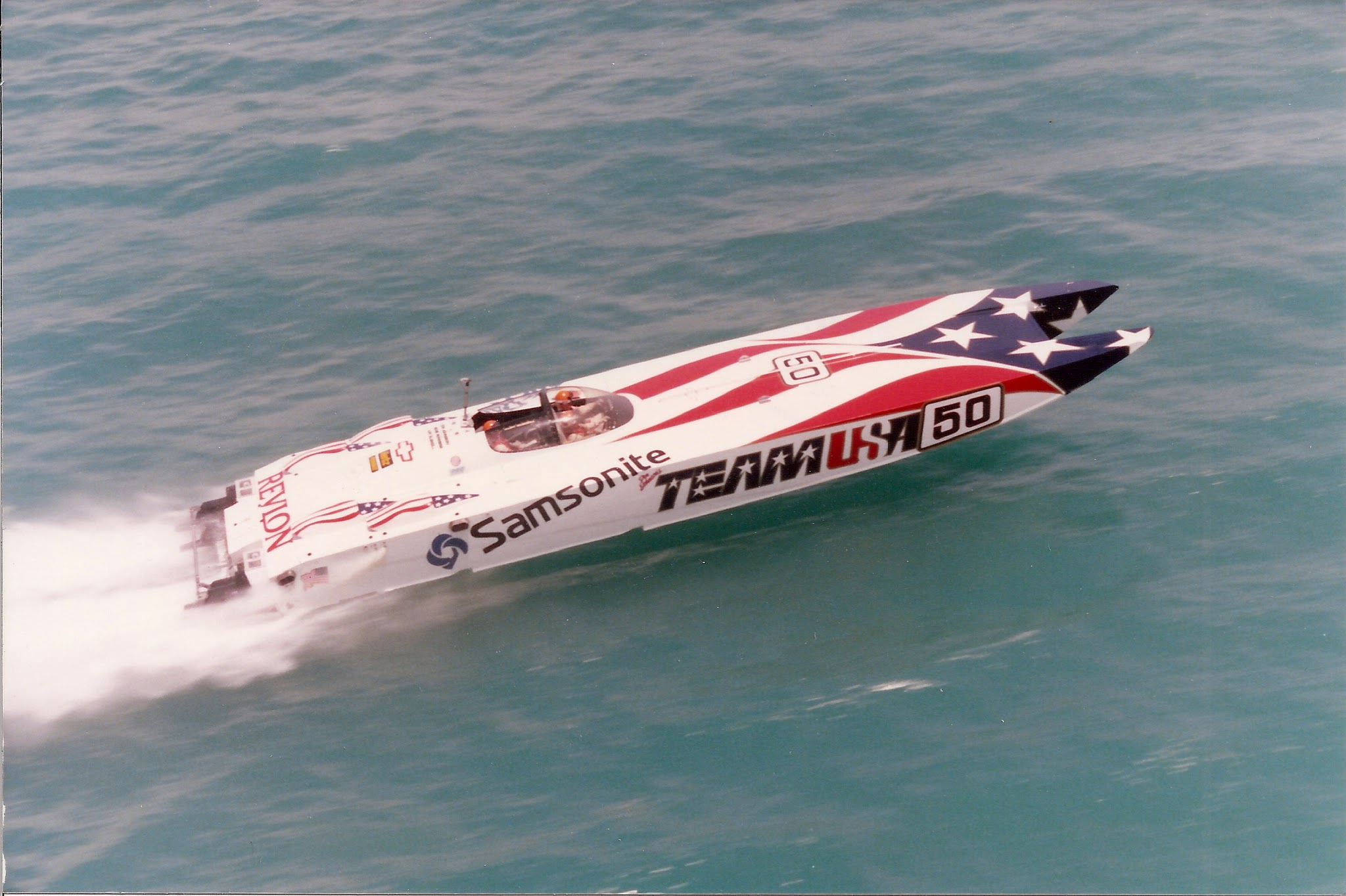The Ultimate Outboard Engine Buyer's Guide: Heavy on the Power
The Wave to Wave Outboard buyers guide is focused on performance orientated outboards from the midsize horsepower range to the high horsepower range. We have 2 separate categories, performance and semi-performance. The performance category focuses on hardcore outboards that are race capable yet might be accessible to consumers. Semi-performance refers to consumer outboards that you would find on the showroom floor of major manufacturers that have a some performance features yet come with a full warranty. What differentiates the categories? Basically, true performance outboards utilize different internal materials (forged internals, lightweight blocks), less restrictive exhaust, optional gearcases and gear ratios, optional mid sections (15” or 20”) and solid motor mounts. Race application engines don’t have the same restrictions as consumer outboards and they often have no warranty or very limited ones.
Performance
Mercury Racing (website)
Mercury Racing is the biggest producer of outboard racing engines. They offer everything from a 2.5 200 HP SST - 12” for tunnel racing to the more consumer 400R Verado. Oh, they also make a 60 HP Formula Race, 15” little engine. Very cool for small boats. There are 2 versions of the 2.5 200HP, the ROS 15” mid is specifically for a single engine racing class in Europe and both are restricted to race, although if you know the right people, you can get one. Apparently it is a very stout engine, making around 240 HP at the prop, revs to 7000 RPM, weighs 430 Lbs.
Race
For racing only, the 200 XS OptiMax is light and powerful, only comes in a 15" mid.
Next are the 250 XS and the 300 XS. These are the ultimate consumer performance outboards based on the fact that they come out of the box with everything you need. Solid mounts, a choice of lower, a choice of gear ratios and they are among the lightest power to weight for performance consumer outboards. They look similar but the 300 XS is a 3.2 liter block and is one of the most stout 2-stroke available and makes just over 300 HP, with torque around 330 lbs/ft. They weigh 505 Lbs. in the 20” version. People often ask what is different than the Pro XS series from Mercury Marine, it is the mounts, the reed valves, internals and the ECU is calibrated differently. Being from Mercury Racing, they have a limited warranty compared to a regular Mercury engines.
The 300 XS is one of the best power to weight performance outboard options for consumers, solid mounts and optional gearcases make it hard to beat for a variety of applications.
The 400 HP versions are based on the 2.6 Verado block, supercharged and tuned differently. Most people think the Verados are pigs on performance boats and they are because they are just too heavy. But, now with 400 HP, you can justify the weight on bigger hulls and your options are very limited, as in zero if you want a 400 HP outboard that doesn’t weigh as much as a fire truck. The Mercury Racing 400 comes in a few configurations. Basically, the R and the Carbon are basically the same. You can get different colors, choose between the sportmaster and the offshore HD lower. The mounting bracket is unique and uses a higher performance “semi-solid” engine mounts and comes with hydraulic steering unique to the 400 and stainless guide plates. Heads, exhaust and cam are all unique to the 400. There is a 15” ROS version for specific race applications. Crazy engine, but you have to have the right hull. Probably too heavy for many under 25 single engine boats, coming in at 668 Lbs. Quite a few big cats and offshore boats running twins or multiple engines have shown good performance numbers. I wish I didn’t sound like a paid shill for Mercury Racing but if you want a serious performance engine that you can actually buy and you also want an amazing array of props to choose from, then you have to go Mercury Racing.
Caldwell Racing Technology (website)
Caldwell Racing Technologies makes the most hardcore “new” engine available, the best I can tell. The 2.5 billet block is built from the ground up to accept Caldwell’s own crankshaft, custom sleeves and features optional 1 and 2 ring rod pistons. Adjustable intake inserts can custom tune HP and the billet cylinder heads have adjustable pucks. The engine is very tunable and easier to repair than a typical 2-stroke racing engine. Everything is built specifically for the engine, not interchangeable with Mercury Racing units. Caldwell Racing Technologies is selling it through a dealer network and I believe it is Pro Marine USA. I will double check on that. The goal being you can have a turn-key drop on or buy the block, front half, sleeves and pucks as a package. I believe the package ranges from $16k to $18k, depending on configuration, more for the turn-key. The engine is a work of art, I saw it in-person at the Miami Boat Show.
CRT
Fully new custom built 2.5 block and components. Tunable from 250 hp to 380 hp.
Semi-Performance
Mercury Marine (website)
For Mercury, the Pro XS lineup is pretty solid. They are tuned to produce decent power, have semi-solid mounts and range from the 4-stroke 115, small block 2.5 150 and 175 Pro XS, to the 3.0 200, 225 and 250. The 225 and 250 can be had with the optional torque master 2 lower unit too. My favorite is the 175 Pro XS, if you have an older lightweight 2-stroke, the 150 and 175 are great options, they are 430 Lbs and put out a little more power than listed. The 175 is dyno’d around 195 HP, so it is a good 200 HP replacement and is way more efficient than the old EFI Mercs. The big ones are great too, because you get good performance, full warranty and they are among the lightest of the 200 HP + big block engines on the market. Unfortunately, they are 505 Lbs, which is pretty heavy in general.
4-Stroke
Light large displacement 4-strokes are the current recipe for consumer performance outboards, like the 115 Pro XS
The latest Pro XS is the 115, based on a new 2.1 liter block, going with Mercury’s 4-stroke philosophy of big displacement to augment torque and durability. Reports are that it is a great engine and weighs 360 Lbs. Mercury makes a 4 cylinder 150 HP, 3.0 liter 4-stroke, it is not a high performance engine but look for them to introduce it into their Pro XS lineup eventually, with that displacement, it can make way more power. Plus, it is a reasonable 450 Lbs. I have run this engine on a fishing boat and it is pretty good.
The 2.5, 175 Pro XS is economical, light and powerful, producing approximately 195 HP.
Yamaha (website)
I like Yamaha. Let me restate that, I want to like Yamaha. I feel like they’re like those really good looking girls that do a bunch of weird stuff to their hair and clothes, making themselves “less” good looking. Yamaha has a lineup they call the V-Max SHO. They are tuned a little better with a unique cam profile and the big block versions have an aggressive bullet nose lower unit. It’s a massive 4.2 liter block and the engine weighs in at 505 Lbs. That is a competitive weight even though it looks like it weighs 7,000 Lbs because of it’s size. The 150 and 175 Vmax SHO are interesting engines, they use the 2.8 liter engine seen in the F200. The issue is they are very heavy, 480 Lbs. On the right hull, probably a good option. I’ve run a F150 quite extensively and it is a great engine overall, super quiet and decent power delivery. I imagine the SHOs are quite a bit better but on a lighter hull, the Merc Pro XSs are the best option.
Yamaha
The large displacement, 4.2 V6 from Yamaha is powerful, has a bullet nose lower unit and is not too heavy.
My favorite is the 115 Vmax SHO. It goes head to head with the Mercury 115 Pro XS, 360 Lbs and is a great repower option for light hulls. My biggest issue is the weight of the 150 and 175, it’s too bad but they are still the next closest viable option in that range after Mercury. If you’re a diehard Yamaha person, they work. The big blocks seem like viable competitors if you want to go 4-stroke and there are some aftermarket tuning options that apparently can update the ECU for big power gains. I wish they would paint the engine all one color, they look very goofy and they have way too much lingo on the cowling. It has 3 different fonts and labels and 4 or 5 different colors going on. The mid looks like they forgot to paint it to match the lower and the cowling.
Other than how ugly they are, the 115 Vmax SHO is a strong performer in this range.
Evinrude (website)
Hey everyone, 2-strokes are dead. "No they aren’t," says Evinrude, "we just designed all new powerheads and components that are more powerful and efficient than 4-strokes." I like Evinrudes and I am really coming around on the G2 design. I really liked the Etec G1 2.6 liter engines, those were officially the lightest outboards on the market in the 135 to 200 HP range. Unfortunately, Evinrude is phasing them out. Right now all that is left is the 135 HO and the regular 150. The 135 HO is perfect for replacing an old 135 or 150, as it produces close to 150 HP and comes with the L2 gearcase. There is no more 150 HO, which was also a great engine.
2-Stroke
Formerly the lightest outboards on the market from 135 to 200, the E-Tecs are being phased out.
The bigger engines are all G2 now. I like the big 3.4L G2s. They are heavy but when you consider the steering is built into the swivel bracket, they are close the the big Yamahas and Mercs and when you’re already over 500 Lbs, what’s 20 Lbs among friends. The steering is really cool and so is the rigging tube that is stationary to the bracket, making it the cleanest rigging of any engine. The steering is adjustable in the sense you can dial in the feedback pressure but I do believe it is mounted with rubber mounts, making the steering a little sloppy. That is the feedback I have received. The cowling is customizable and you can easily change it after you buy it too, which I think is cool. Overall, the 3.4 liter G2s are really good options. The 250 HO version is probably the one to get, it is actually putting out far more power, around 270 HP, it’s a beast and will probably have far more midrange torque than a comparable 4-stroke. Maybe they can make another goofy promo video towing a boat with a competitors engine to prove this.
Evinrude introduced the G2 in the 150 to 200 HP range using a new 2.7 block. And I wouldn’t run it on a performance hull, they must have been designing it purely for heavy center consoles and bay boats. The weight is almost indistinguishable from the 3.4 G2s, even when you factor in the dynamic steering, which is optional, it is just too heavy. The 2.7 200 is 530 Lbs, without steering, same as the 150. I think it is anyway, the website is hard to determine which configuration you’re looking at. Either way, 530 Lbs is about what the 3.4 HO version weighs, you wouldn’t want that on a light hull suited for a 150. Sorry Evinrude, the small block G2 is a bust to me, 100 Lbs lighter and you would have had a winner. Even if the exceptional emissions numbers are true, you eliminate one of the biggest 2 stroke advantages by being that heavy.
The Etec 115 HO is solid option in that range, although surprisingly, now heavier than the Yamaha and Mercury options at 390 Lbs. For the money, I’d take the Evinrude 135 HO for an affordable repower on a light boat, the 250 HO if you want big power, dynamic steering, the neat rigging and you just don’t want to run a Yamaha or Mercury Pro XS.
Suzuki (website)
I really like how Suzuki is making a 4 cylinder 150-200 HP but they are too heavy. Above 200 HP and they are tanks and not in a good way. Affordable repower option for big heavy slow boats. The only interesting engine is the DF 90, because it’s the lightest 4-stroke 90. It is really disappointing because Suzuki has an amazing motorcycle race division and has some really decent technology. It would be great if there was more competition for performance outboards.
Don't let the matte finish fool you. These are not performance outboards. Better suited for heavy fishing boats and barges.
Honda (website)
One thing about Honda I will say is the engines look beautiful. Very understated silver with simple black letters, very clean looking. That’s all I can say about Honda as far as performance outboards go. If you look at how involved they are in automotive racing and motorcycle racing, it is really disappointing.
This is the kind of junk you expect to see these heavy slugs on. That's over 1,000 Lbs of outboard for 300 HP. I hate RIBs too. You probably need the inflation to keep this tug floating though. I hear Honda makes good lawnmowers.
Caldwell Racing Promo Video
















